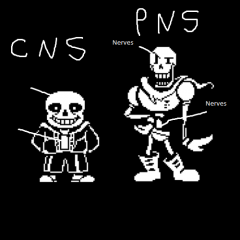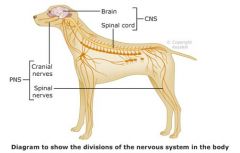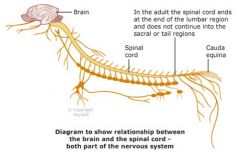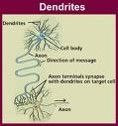![]()
![]()
![]()
Use LEFT and RIGHT arrow keys to navigate between flashcards;
Use UP and DOWN arrow keys to flip the card;
H to show hint;
A reads text to speech;
66 Cards in this Set
- Front
- Back
- 3rd side (hint)
|
What are nerves? |
|
|
|
|
Basic Functions of the Nervous System |
|
|
|
|
Parts of the Nervous System |
- (Chara Never Sleeps) - Brain and Spinal Cord
- (Papyrus Never Stops) - Cranial and spinal nerves - Afferent system (incoming sensory) - Efferent system (Outbound motor) |

|
|
|
CNS vs. PNS |

|
|
|
|
Central Nervous System |

|
|
|
|
Two Types of Nervous Tissue Cells |
Neurons Neuroglia (Glial Cells) |
|
|
|
Neurons |
|
|
|
|
Neuron - Cell Body |
|
|
|
|
Neuron - Dendrites |

|
|
|
|
Neuron - Axon |
|
|
|
|
Nerves |
|
|
|
|
Synapse |
|
|
|
|
Neurotransmitters |
|
|
|
|
Functions and Characteristics of Nervous Tissue |
Neurons:
|
|
|
|
Neuroglia |
|
|
|
|
Anatomy of an Axon |
|
|
|
|
Importance of Myelin |
|
|
|
|
Neuron Function |
|
|
|
|
Resting State |
|
|
|
|
Sodium Potassium Pump |
|
|
|
|
Resting Membrane Potential |
|
|
|
|
Depolarization |
|
|
|
|
Action Potential |
|
|
|
|
Repolarization |
|
|
|
|
Biophysics |
|
|
|
|
Threshold |
|
|
|
|
Wave of Depolarization |
|
|
|
|
All or None Principle |
|
|
|
|
Refractory Period |
|
|
|
|
Speed of Transmission |
|
|
|
|
Two Categories of Neurotransmitters |
|
|
|
|
The Brain |
|
|
|
|
Cerebrum |
|
|
|
|
Cerebellum |
|
|
|
|
Diencephalon |
|
|
|
|
Brain "Stem" |
|
|
|
|
The Brain - Protection |
|
|
|
|
Brain Blood Supply |
|
|
|
|
Blood Brain Barrier |
|
|
|
|
OOOTTAFVGVAH |
Oh - Olfactory Oh - Optic Oh - Oculomotor To - Trochlear Touch - Trigeminal And - Abducent Feel - Facial Very - Vestibulocochlear Green - Glossopharyngeal Vegetables - Vagus A - Accessory H - Hypoglossal (Oh Oh Oh, To Touch And Feel Very Green Vegetables AH) |
|
|
|
Comparison of Somatic and Autonomic Nervous Systems |
|
|
|
|
Autonomic Nervous System |
|
|
|
|
Sympathetic vs. Parasympathetic Divisions |
Example:
|
|
|
|
Spinal Cord |
Gray Matter vs. White Matter
|
|
|
|
Spinal Cord |
|
|
|
|
Reflexes |
|
|
|
|
Withdrawal Reflex "Flexor" reflex |
|
|
|
|
Corneal Reflex |
|
|
|
|
PLR |
|
|
|
|
The General Senses |
|
|
|
|
Visceral Sensations |
|
|
|
|
Touch (Tactile sense) |
|
|
|
|
Temperature Sense |
|
|
|
|
Corrective Actions |
|
|
|
|
Nociception |
|
|
|
|
Proprioception |
|
|
|
|
5 Special Senses |
|
|
|
|
Gustation (Taste) |
|
|
|
|
Olfaction (Smell) |
|
|
|
|
Hearing |
|
|
|
|
Equilibrium |
|
|
|
|
Vision |
|
|
|
|
Anatomy of the Eye |
|
|
|
|
Rods & Cones |
|
|
|
|
Image Formation |
|
|
|
|
Extraocular Structures |
|
|

